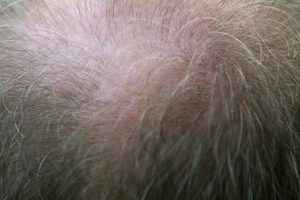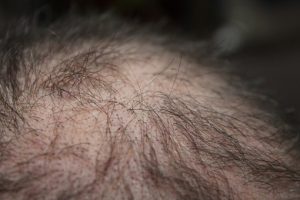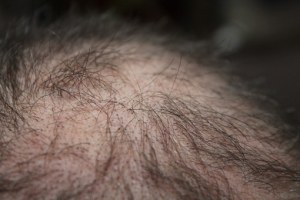Hair Restoration
Hair Restoration is an effective way to reverse permanent hair loss. In men, hair loss occurs in a pattern called ‘male pattern baldness. This usually occurs above the temples and on the top of the head, while hair on the sides and back remain.
Hair loss among men is typically caused by the hormone DHT (dihydrotestosterone) which is a converted form of testosterone. As men advance in age testosterone levels are diminished, and the conversion to DHT occurs, attacking the hair follicles on the baldness-prone areas which are genetically vulnerable to the hormone. Hair loss in women, however, is trickier.
 Like male baldness, female baldness is caused by hormones but hormone DHT (dihydrotestosterone). In addition, hair loss in women occurs all over the head, making treatment complicated. For instance, surgical hair restoration is rarely recommended to women, although gives permanent and satisfactory results compared to non-surgical methods.
Like male baldness, female baldness is caused by hormones but hormone DHT (dihydrotestosterone). In addition, hair loss in women occurs all over the head, making treatment complicated. For instance, surgical hair restoration is rarely recommended to women, although gives permanent and satisfactory results compared to non-surgical methods.
Hair Restoration Procedure
surgical hair restoration – The surgical hair restoration is called Follicular Unit Transplantation (FUT). The procedure involves the extraction of hair follicles from the back of the head, where hair growth is more durable compared to the top of the head, to transplant into the balding areas. Relocation of hair follicles makes them resistant to the baldness-causing hormone, thus hair grows (back) naturally and permanently where they are transplanted.
Non-surgical hair restoration – This hair regrowth treatment includes prescription and non- prescription drugs such as hormone-inhibitor: Propecia (for men) or topical solutions such as Minoxidil for men and women. Propecia was originally a drug used for treatment of certain prostate conditions that went under the name of Proscar.
Surprisingly, a beneficial side effect was hair restoration through inhibiting the testosterone-DHT conversion. The reason is DHT is a primary cause of both baldness and prostate conditions such as benign prostatic hyperplasia (BPH). With less DHT afflicting the hair follicles, baldness is stopped in its tracks, allowing natural hair regrowth. Soon it was marketed instead as a hair loss prescription drug.
It has been observed, however, that the restorative effects of Propecia is limited to the crown area, suggesting that hair follicles in the frontal area are far more sensitive to DHT than those on the top or back of the head. The only other means of restoring hair to the front is Follicular Unit Transplantation (FUT), which can also be performed for cosmetic reasons such as lowering the hairline.
 FUT only involves local anesthesia and is an outpatient procedure. People who have undergone this surgery report minor, if any at all, discomfort. Drugs like Propecia, however, work by targeting the problematic hormone. If DHT in the body is lessened, testosterone levels can rise. While this may bode well for men’s sexual drives, adversely this may lead to serious health conditions such as an increased risk for high blood pressure.
FUT only involves local anesthesia and is an outpatient procedure. People who have undergone this surgery report minor, if any at all, discomfort. Drugs like Propecia, however, work by targeting the problematic hormone. If DHT in the body is lessened, testosterone levels can rise. While this may bode well for men’s sexual drives, adversely this may lead to serious health conditions such as an increased risk for high blood pressure.
Hair Restoration Cost
FUT is priced either by number of graft, with one averaging $5 to $6, or by session, which averages 1000 to 2000 grafts. The procedure also varies from one physician to another. Talk to your doctor to find out how many grafts you will need in order to restore a balding spot. Drugs like Propecia fetch an average price of $60 dollars for a month’s supply; topical treatments such as application of Minoxidil are priced at an average of $25 to $30 for a 3-month supply.



